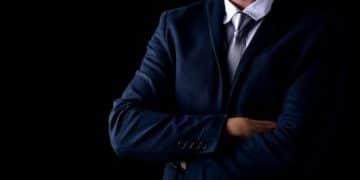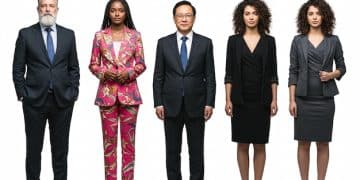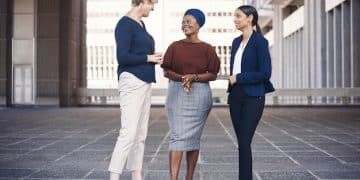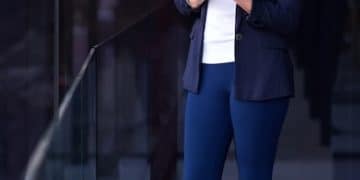Decoding Dress Codes 2025: Your Guide to Formal, Business, and Smart Casual
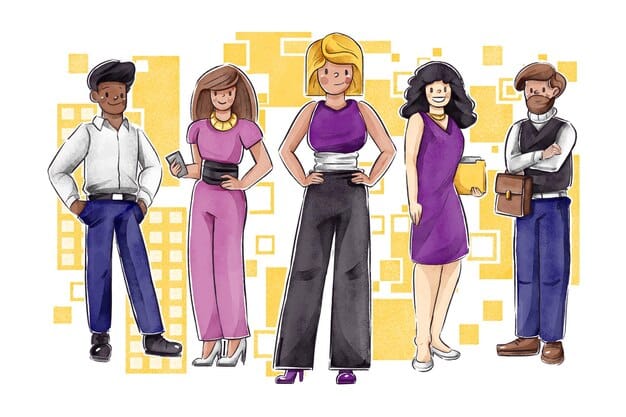
Navigating the nuances of modern fashion, Decoding Dress Codes: A Comprehensive Guide to Navigating Formal, Business Casual, and Smart Casual in 2025 empowers individuals to confidently select appropriate attire for any occasion, bridging traditional sartorial rules with contemporary trends.
In a world where digital presence often blurs the lines of professional and social interaction, understanding dress codes remains a cornerstone of effective personal branding and social etiquette. Whether you’re aiming to impress in a boardroom or network at a relaxed event, a firm grasp of sartorial guidelines, especially for Decoding Dress Codes: A Comprehensive Guide to Navigating Formal, Business Casual, and Smart Casual in 2025, ensures you convey confidence and respect. This guide unpacks the essentials.
The Evolving Landscape of Dress Codes in 2025
The year 2025 presents a dynamic fashion landscape, where traditional dress codes coexist with increasing flexibility and personal expression. The global pandemic accelerated a shift towards comfort and versatility, yet the fundamental principles of appropriate attire endure. Understanding this evolution is key to mastering your wardrobe choices.
Beyond the Binary: From Strict Rules to Fluid Interpretations
For decades, dress codes were often rigid, with clear distinctions between “work clothes” and “play clothes.” However, the boundaries have softened. While certain professional environments still demand strict adherence to formal wear, many industries now embrace a more nuanced approach, often blending elements of casual and business attire. This shift reflects a move towards authentic self-expression within professional boundaries, empowering individuals to inject personality into their work wardrobes. The rise of remote work and hybrid models further complicates the picture, as home offices often dictate a different, more relaxed standard, only for individuals to re-enter a formal setting for in-person meetings.
The challenge lies in discerning when to lean into the fluid interpretations and when to adhere to the more traditional expectations. This requires not only an understanding of the specific dress code but also an awareness of the company culture, the nature of the event, and even the industry’s historical sartorial norms. For instance, a tech startup might interpret “business casual” very differently from a long-established law firm.
Key Drivers of Change
Several factors are contributing to this ongoing evolution. The increasing awareness of sustainability in fashion, for example, encourages a move towards versatile, multi-purpose garments that can be dressed up or down. Technological advancements in fabric manufacturing also play a role, allowing for materials that offer comfort, wrinkle resistance, and elevated aesthetics, blurring the lines between formal and casual textiles. Furthermore, the influence of social media and global fashion trends means that styles are disseminated and adopted at an unprecedented pace, leading to a more diverse and eclectic approach to dressing.
This new paradigm requires individuals to be more adaptable and discerning than ever before. It’s not just about knowing what to wear, but understanding why something is appropriate and how it communicates a message about your professionalism and personal brand. The goal is to be appropriately dressed, leaving a positive impression without appearing stifled or out of touch.
The journey of mastering dress codes in 2025 isn’t about memorizing a set of rigid rules; it’s about developing an intuitive understanding of context, culture, and personal expression. This nuanced approach ensures that your attire always serves to enhance your presence, rather than detract from it.
Formal Attire: The Epitome of Professionalism and Prestige
Formal attire, often synonymous with “black tie” or “white tie,” represents the pinnacle of sophistication and professionalism. While less common in daily life, understanding its specific requirements is crucial for significant events, galas, and high-stakes business functions.
The Unwavering Standards of White Tie
White tie is the most formal dress code, reserved for state dinners, certain royal events, or prestigious award ceremonies. For men, this means a black dress coat with tails, a white pique waistcoast, a white pique bow tie, a white stiff-front shirt, black trousers with a single stripe, and black patent leather dress shoes. Accessories include white gloves and sometimes a top hat. For women, a floor-length evening gown is mandatory, often with gloves and fine jewelry. The elegance and strictness of white tie underscore its rarity and the profound importance of the occasion it denotes. It leaves no room for casual interpretations.
Black Tie: Sophistication with a Touch of Modernity
Black tie is more frequently encountered than white tie but remains highly formal. For men, the staple is a tuxedo (dinner jacket), black trousers, a white dress shirt, a black bow tie, cummerbund (or waistcoat), and black patent leather dress shoes. A velvet jacket or a midnight blue tuxedo can offer a subtle variation while adhering to the code. Women’s black-tie attire typically includes a formal cocktail dress, a long evening gown, or elegant dressy separates. The choice depends on the specific event, with long gowns generally preferred for more traditional or high-profile occasions. Accessorizing with refined jewelry and elegant heels completes the look.
The key to excelling in formal attire lies in meticulous attention to detail: the fit of the garments, the quality of the fabrics, and the choice of appropriate accessories. These elements combine to create an impression of polished elegance and respect for the occasion. Even with modern twists, the essence of formal wear – its structure, clean lines, and luxurious feel – remains unchanged.
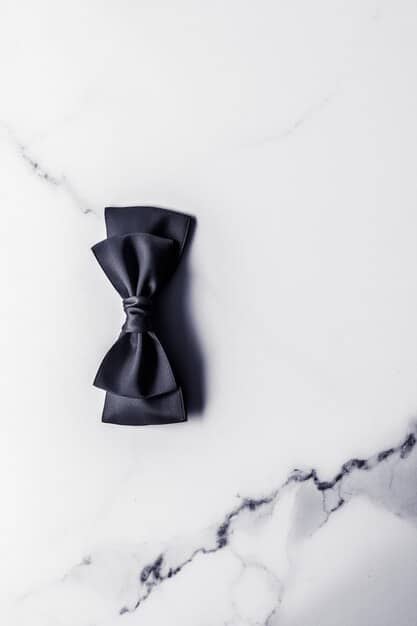
Business Casual: The Modern Workday Standard
Business casual has become the most prevalent dress code in many professional environments, striking a balance between formal professionalism and comfortable versatility. Its broad interpretation, however, often leads to confusion. The aim is to present a polished yet approachable image, suitable for both internal meetings and client interactions.
Defining the Parameters
For men, business casual typically involves tailored trousers (chinos or dress pants), a button-down shirt (long-sleeved or short-sleeved, depending on context), polos, or quality knitwear such as sweaters or cardigans. A sport coat or blazer can elevate the look, especially for client meetings or presentations. Loafers, Oxfords, or clean, minimalist sneakers are acceptable footwear. Jeans are generally discouraged unless specified as “smart casual” and even then, must be dark wash and impeccably maintained.
For women, business casual encompasses a wider range of options: tailored trousers, dress skirts (pencil, A-line), blouses, knit tops, blazers, and professional dresses. Footwear can include low heels, flats, or stylish ankle boots. The key is to avoid overly casual items like t-shirts with graphics, athletic wear, or overly distressed denim. The silhouette should remain professional and refined, even if the fabric is more relaxed.
Navigating the Nuances: Industry and Region
The interpretation of business casual can vary significantly across industries and geographical regions. A tech company in Silicon Valley might have a more relaxed version of business casual than a financial institution in New York City. Understanding your workplace culture is paramount. Observe what senior colleagues wear and err on the side of being slightly more dressed up rather than underdressed. It’s always easier to remove a blazer than to conjure one up.
Consider the “three-piece rule” of business casual: ensuring that at least three elements of your outfit are polished. For example, if you wear jeans (dark wash, without distress), pair them with a collared shirt and a blazer. If you opt for a more casual top, ensure your bottoms are tailored and your shoes are professional. This approach helps maintain a cohesive and appropriate look.
Ultimately, business casual is about looking competent and put-together without the rigidity of full formal wear. It’s about demonstrating respect for your colleagues and clients while embracing a more comfortable and contemporary approach to professional dressing. Investing in good quality, versatile pieces that can be mixed and matched is a smart strategy for building a functional business casual wardrobe.
Smart Casual: Blending Comfort with Style
The smart casual dress code is arguably the most versatile and, consequently, the most challenging to define. It bridges the gap between strictly professional and overtly relaxed attire, making it ideal for social events, informal business gatherings, or upscale leisure activities. The essence of smart casual is polished comfort – looking put-together without appearing overly formal.
Elements of Smart Casual for Men
For men, smart casual offers a wide array of choices. Dark, well-fitting jeans or chinos are often the foundation, paired with stylish button-down shirts, refined polo shirts (not athletic ones), or high-quality knitwear (sweaters, cardigans). A blazer or a stylish jacket can instantly elevate the look from casual to smart casual. Footwear might include loafers, desert boots, clean fashion sneakers, or even dressier casual shoes. Avoid flip-flops, athletic sneakers, and overly distressed clothing. The goal is to look effortlessly stylish, incorporating contemporary trends while maintaining a sense of refined taste.
Smart Casual for Women: Versatility is Key
Women’s smart casual wardrobe is equally diverse. It can involve tailored trousers, stylish jeans (dark wash, no rips), skirts (midi, A-line), and professional-looking dresses. Tops range from elegant blouses and sophisticated knitwear to fashionable, well-fitted t-shirts. Layers like blazers, stylish jackets, or cardigans add an extra touch of polish. Footwear options are vast, including stylish flats, low heels, chic sneakers, or ankle boots. Accessories play a significant role in smart casual for women, allowing for personal expression through jewelry, scarves, and handbags, elevating a simple outfit to a statement.
The success of a smart casual outfit often lies in the quality of the fabrics, the fit of the garments, and the overall coherence of the ensemble. It’s about intentional dressing, rather than throwing on the first comfortable items available. The aim is to create an impression of casual elegance, suggesting thoughtfulness in your appearance without being over-the-top.
Accessorizing: The Finishing Touch for Every Code
Accessories are not merely add-ons; they are integral components of any outfit, capable of transforming an ensemble and ensuring adherence to specific dress codes. The right accessories elevate your look, demonstrating attention to detail and personal style.
The Role of Accessories in Formal Wear
In formal settings, accessories are understated yet critical. For men, a classic watch, cufflinks, and a well-chosen pocket square (if wearing a tuxedo or suit) add layers of sophistication. The tie and pocket square should complement, not necessarily match, the rest of the attire. For women, delicate jewelry, an elegant clutch, and sophisticated heels are paramount. The goal is refinement, with pieces that enhance the overall elegance without detracting from the main garment. Quality over quantity is the mantra.
Enhancing Business Casual with Thoughtful Details
For business casual, accessories should convey professionalism and polish. Men can opt for a stylish leather belt that matches their shoes, a sophisticated watch, and a quality briefcase or messenger bag. Ties are generally optional but can be used strategically to elevate a look for specific meetings. Women have more leeway with accessories: statement necklaces, elegant scarves, smart handbags, and tasteful earrings can add personality while maintaining a professional demeanor. The key is to ensure accessories are well-maintained and complement the outfit without being distracting or overly casual.
Smart Casual: Expression Through Accessories
Smart casual allows the most creative expression through accessories. Men can experiment with different styles of watches, patterned socks, or even tasteful bracelets. The choice of belt, sunglasses, and the type of bag can significantly alter the overall impression. For women, smart casual accessories can be bolder – a chic oversized scarf, a trendy handbag, layered necklaces, or statement earrings. Footwear choices, from fashionable sneakers to embellished flats, also play a huge role in defining the smart casual aesthetic. The freedom here is to personalize and inject individuality, ensuring the accessories reflect a cohesive and stylish narrative.
Ultimately, whether it’s a subtle glint of gold or a vibrant splash of color, accessories complete the sartorial story. They offer an opportunity to demonstrate your understanding of the dress code, your attention to detail, and your unique sense of style, making a lasting impression in any setting.
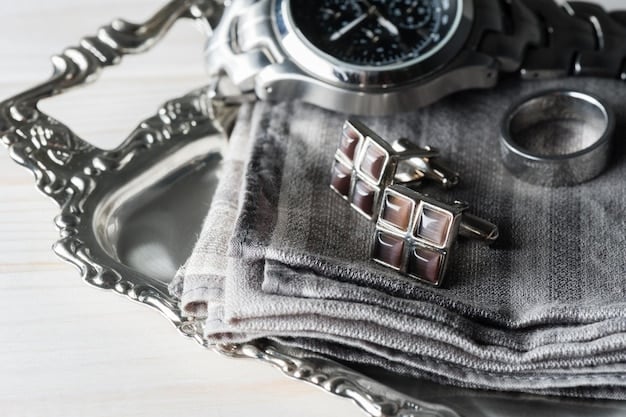
Practical Tips for 2025: Staying Stylish and Code-Compliant
Navigating dress codes in 2025 requires more than just knowing categories; it demands adaptability, awareness, and strategic planning. Here are practical tips to ensure you’re always dressed to impress, regardless of the occasion.
Invest in Versatile Core Pieces
Building a wardrobe around versatile core pieces is the most effective strategy for managing diverse dress code requirements. Think classic blazers, tailored trousers, quality button-down shirts, and elegant dresses in neutral colors. These items can be dressed up or down with relative ease simply by changing accessories or layering. For example, a black blazer can transition from a formal event (paired with a dress shirt and tie) to a business casual meeting (over a polo) or even a smart casual outing (with dark jeans and a stylish t-shirt). This approach minimizes excessive purchases and maximizes your sartorial options.
Research the Event and Venue
Before attending any event, always make an effort to research its nature, the venue, and the expected attendees. A “casual” corporate picnic will differ greatly from a “casual” backyard BBQ. Online searches, asking organizers, or observing previous event photos can provide invaluable clues. When in doubt, it’s generally better to be slightly overdressed than underdressed, especially in professional or semi-formal contexts. It conveys respect and preparedness.
Pay Attention to Fit and Fabric
The fit of your clothes and the quality of their fabric significantly impact how an outfit is perceived. Well-tailored garments, even those in casual styles, instantly look more professional and polished. Ill-fitting clothes, regardless of their price tag, can detract from your overall appearance. Similarly, opting for natural fibers like cotton, wool, linen, or high-quality blends often enhances the look and feel of an outfit, lending an air of sophistication that polyester or cheap synthetics might lack. These materials also tend to drape better and last longer.
Consider Your Personal Brand
Your attire is a powerful component of your personal brand. It communicates professionalism, attention to detail, and understanding of social norms. Even within a given dress code, there’s always room for personal expression. Incorporate elements of your unique style through colors, patterns (used tastefully), or accessories. However, ensure that your personal flair doesn’t overshadow the primary objective of conforming to the dress code, especially in professional environments. Balance self-expression with the demands of the situation to create a cohesive and impactful image.
By integrating these practical tips into your approach to dressing, you can navigate the complexities of 2025’s dress codes with confidence and style. Staying informed, investing wisely, and paying attention to detail will ensure you leave a positive and lasting impression, wherever you go.
Future Trends and Timeless Principles
As we look beyond 2025, the evolution of dress codes will continue, influenced by technological advancements, societal shifts, and sustainable practices. However, amidst these changes, certain timeless principles will always underpin effective sartorial choices.
The Rise of “Hybrid Attire”
One notable trend expected to gain further traction is “hybrid attire,” where garments are designed to function seamlessly across multiple contexts. This includes breathable, wrinkle-resistant fabrics that look sharp in the boardroom but feel comfortable for long commutes or travel. We’ll see more sophisticated loungewear making its way into redefined smart casual settings, and performance fabrics being integrated into traditionally formal pieces, offering enhanced comfort and mobility without compromising aesthetics. The emphasis will be on clothing that adapts to a dynamic lifestyle, blurring the lines between work, leisure, and formal occasions even further.
Sustainability and Conscious Consumption
The increasing awareness of climate change and ethical production will profoundly impact fashion choices. Consumers and companies alike will prioritize sustainable materials, ethical labor practices, and the longevity of garments. This means a move away from fast fashion towards investing in fewer, higher-quality pieces designed to last. Dress codes might implicitly encourage this by valuing well-maintained, classic items over fleeting trends, reinforcing the idea that timeless elegance is inherently sustainable. The ability to mix and match versatile pieces will become not just a style choice, but an ethical imperative.
Personalization Through Technology
Technology will also play a greater role in personalizing dress codes. AI-powered stylists, virtual try-on experiences, and personalized recommendations based on body type, skin tone, and existing wardrobe could help individuals navigate complex dress codes with unprecedented ease. Wearable technology might subtly integrate into clothing, offering functionalities that complement professional and social interactions without being overtly visible.
Timeless Principles Endure
Despite these exciting developments, the core principles of dressing appropriately will remain constant. Respect for the occasion, consideration for those you are interacting with, and a clear understanding of the message your attire sends will always be paramount. Fit, cleanliness, and context will continue to be the cornerstones of a well-dressed individual. The ability to adapt to subtle cues, distinguish between formal, business casual, and smart casual, and project confidence through your appearance will remain invaluable skills. Fashion may evolve, but the art of making a positive impression through attire is eternal.
In essence, the future of dress codes is about intelligent adaptation. It’s about leveraging innovation to enhance comfort and versatility while upholding the foundational elements of elegance and respect. Understanding these ongoing shifts and timeless truths will empower you to always dress with purpose and distinction, well beyond 2025.
| Key Aspect | Brief Description |
|---|---|
| 🤵 Formal Attire | Highest level of sophistication for prestigious events, incl. white/black tie. |
| 👔 Business Casual | Polished yet comfortable for professional settings, often industry-dependent. |
| 👕 Smart Casual | Elegant comfort for social events and informal gatherings, blends style with ease. |
| ✨ Accessorizing | Key to elevating any outfit and adhering to specific dress code nuances. |
Frequently Asked Questions About Dress Codes in 2025
Business casual prioritizes a professional image suitable for office environments, typically involving tailored trousers, button-downs, or blouses. Smart casual leans towards a more relaxed yet stylish aesthetic, ideal for social events, allowing for items like dark-wash jeans, fashionable sneakers, and more expressive accessories while still looking polished.
Generally, jeans are not typically part of traditional business casual, which emphasizes tailored clothing. However, some modern workplaces, particularly in tech or creative industries, might allow dark-wash, well-fitted, non-distressed jeans when paired with professional tops, blazers, and proper footwear. Always observe your specific workplace culture.
Focus on investing in high-quality, versatile core pieces in neutral colors that can be easily mixed and matched. Prioritize good fit and durable fabrics. Stay updated on broad fashion trends, especially ones incorporating comfort and sustainability. The emphasis for 2025 is adaptability and conscious consumption.
For men, a quality watch, versatile belts, and well-maintained shoes are key. For women, elegant handbags, subtle jewelry for formal/business settings, and expressive but tasteful pieces for smart casual are crucial. Accessories should complement the outfit and reinforce the intended dress code, showcasing attention to detail.
When in doubt, it is almost always better to be slightly overdressed. This demonstrates respect for the occasion and your hosts. You can often subtly tone down an outfit (e.g., remove a jacket, loosen a tie) if others are more casual. Being underdressed, however, can make a negative first impression that is harder to rectify.
Conclusion
As we navigate through 2025, the art of dressing well remains a powerful form of non-verbal communication. From the rigid elegance of formal attire to the nuanced comfort of business and smart casual, understanding these dress codes is not just about following rules, but about expressing self-awareness, respect, and confidence. The modern sartorial landscape prioritizes versatility, quality, and a personal touch, allowing individuals to craft an image that is both appropriate and authentically their own. By embracing the evolving trends while honoring timeless principles, you can confidently decode any dress code and make a lasting, positive impression in every facet of your life.

